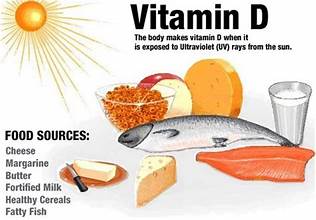Keywords: Vitamin D, vitamin D3, vitamin D2, cholecalciferol, ergocalciferol, 25-hydroxyvitamin D, 1,25-dihydroxyvitamin D, calcitriol, vitamin D metabolism, vitamin D functions, vitamin D RDA, vitamin D deficiency symptoms
Cholecalciferol The sunshine vitamin
Introduction
Vitamin D is a fat-soluble vitamin that is essential for many bodily functions, including bone health, immune function, and cell growth. It is often referred to as the “sunshine vitamin” because it is produced in the skin when exposed to sunlight. Vitamin D can also be obtained from certain foods and supplements.
Vitamin D Forms and Metabolites
There are two main forms of vitamin D: vitamin D2 (ergocalciferol) and vitamin D3 (cholecalciferol). Vitamin D2 is found in plant-based foods, such as mushrooms and fortified foods. Vitamin D3 is found in animal-based foods, such as fatty fish, eggs, and liver.
Once vitamin D is absorbed into the body, it is converted to the active form of vitamin D, called 25-hydroxyvitamin D. This is the form of vitamin D that is measured in blood tests. 25-hydroxyvitamin D is then converted to the most active form of vitamin D, called 1,25-dihydroxyvitamin D, or calcitriol. Calcitriol is the form of vitamin D that binds to vitamin D receptors in cells and exerts its biological effects.
Vitamin D Functions
Vitamin D has many important functions in the body, including:
- Bone health: Vitamin D is essential for the absorption of calcium, which is necessary for strong bones and teeth. Vitamin D deficiency can lead to rickets in children and osteomalacia in adults.
- Immune function: Vitamin D helps to regulate the immune system and plays a role in fighting off infection. Vitamin D deficiency has been linked to an increased risk of autoimmune diseases, such as multiple sclerosis and type 1 diabetes.
- Cell growth and differentiation: Vitamin D is involved in the growth and differentiation of cells. Vitamin D deficiency has been linked to an increased risk of cancer.
Vitamin D RDA
The recommended daily allowance (RDA) for vitamin D varies depending on age. For adults aged 19-70 years, the RDA is 600 IU (international units) per day. For adults aged 71 years and older, the RDA is 800 IU per day.
Vitamin D Sources
The best way to get vitamin D is from sunlight exposure. When exposed to sunlight, the skin produces vitamin D3. However, it is important to note that too much sun exposure can increase the risk of skin cancer.
Vitamin D can also be obtained from certain foods and supplements. Good food sources of vitamin D include:
- Fatty fish, such as salmon, tuna, and mackerel
- Eggs
- Liver
- Fortified foods, such as milk, cereal, and orange juice
Vitamin D supplements are also available. Vitamin D supplements are typically available in two forms: vitamin D2 and vitamin D3. Vitamin D3 supplements are generally considered to be more effective than vitamin D2 supplements.
Vitamin D Deficiency Symptoms
The symptoms of vitamin D deficiency can vary depending on the severity of the deficiency. Mild vitamin D deficiency may not cause any symptoms. However, severe vitamin D deficiency can cause a number of symptoms, including:
- Fatigue
- Muscle weakness
- Bone pain
- Frequent infections
- Delayed wound healing
- Osteoporosis
- Rickets (in children)
- Osteomalacia (in adults)
Conclusion
Vitamin D is an essential nutrient that plays a role in many important bodily functions. Vitamin D deficiency can lead to a number of health problems, including bone problems, immune problems, and cell growth problems.
The best way to get vitamin D is from sunlight exposure. However, it is important to note that too much sun exposure can increase the risk of skin cancer. Vitamin D can also be obtained from certain foods and supplements.
If you are concerned that you may be vitamin D deficient, talk to your doctor. They can test your vitamin D levels and recommend the best course of treatment for you.
🌐 Sources
- The Vitamin D Deficiency Pandemic: a Forgotten Hormone: https://publichealthreviews.biomedcentral.com/articles/10.1007/BF03391602
- [Let’s talk about the hottest vitamin right now – Vitamin D](https://www.



